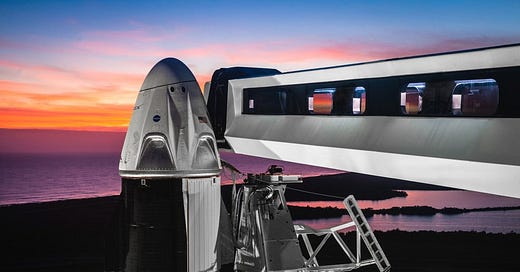Space: The Future is Almost Here
Everyone laughed at SpaceX. Until they succeeded.
by Rod D. Martin
July 19, 2020
While we're thinking deeply about seemingly random things, here's something you really need to understand from Matt Pickering, in answer to a Quora question, "Will SpaceX's Crew Dragon and Falcon 9 or Boeing's CST-100 Starliner influence the design of any future Russian or Chinese spacecraft and rocket?"
Note that this is a point I've been making for a very long time, here, at Stratfor, and in countless other fora, well before it had become a reality.
Matt's answer:
"Already has. I am certain there are a lot of Russians at Roscosmos drinking heavily right now as they watch their meal ticket disappear. Because with the launch of Crew Dragon on a man-rated Falcon 9, it just did. They were charging more for a seat on a Soyuz than what that launch vehicle cost. And the top and bottom thirds are fully reusable. Only the second stage is thrown away.
"Without state support Russia would be grounded. Same for China. But neither will ever be competitive on the commercia…




